Something very different this week - I do hope you enjoy it.
1976 was the year when the first issue of ‘Captain Britain’ was published in Britain, of course. I was eleven years old and had just started senior school, overcome with excitement that we would at last have our own British superhero.
I have told the story many times of how I became a Marvel Guy, the result of the Biker Gang my parents left to babysit me. To reiterate, Andrew, the youngest member of the gang, used to bring me a bag of Marvel Comics to read. But what’s more, he used to take me seriously and discuss the comics with me. My first literary discussions. A British Marvel character was, though, beyond my wildest imagination!
And then I saw it advertised in Spiderman Weekly - ‘Captain Britain’.
Indeed, I was so excited that I couldn’t wait to get home and pick up my issue, which mum had kindly asked the Newsagent to reserve for me, so at school I made myself ill and my mum had to get a Taxi (she couldn’t drive) and pick me up at lunchtime. She was irritated by this imposition on her time.
Once home, the poorly me retreated to my room to devour this new comic character. I can still recall the smell of the paper and how I delicately turned the pages as if it were a valuable manuscript.
I want to evoke a little context; British Comics never featured superheroes; these were an American idea, but we had warriors, space men daring as they could be, historical figures and sportsmen. A few months earlier, a British wartime hero, Union Jack, had been introduced in the ‘Invaders’. A Marvel wartime comic that featured Captain America and some other early heroes, written by Stan Lee’s prodigy, Roy Thomas.
Captain Britian was conceived in America. The comic script was produced in New York by two creators who had vague connections to Britain: writer Chris Claremont (who subsequently went on to glory with the new X-Men), who had emigrated to America as a youngster, and also Herb Trimpe, who happened to be living in Cornwall at the time.
The good Captain, at this point, proved to be a terrible amalgam of Spider-Man and Captain America. He seemed as British as Dick Van Dyke’s accent in Mary Poppins. But I did like the fact that his origin seemed to be connected in some way to Arthurian Mythology, which has always been an interest of mine. You also got as a gift a Captain Britain mask, which I duly put on and careered around my bedroom.
In the comic, I discovered that Brian Braddock (Marvel loved alliterative names) was a physics student from Thames University. He was getting some work expereince at a secret laboratory on Darkmoor, and he smoked a pipe, which was rather antiquated and odd.
So far, so good; then all hell broke loose, and the base was under attack from Joshua Stragg, the Reaver. Who curiously looked like Labour MP John Prescott.
Our hero, Brian, escapes on a motorbike and is intercepted by Stragg’s strange UFO-like aircraft from the X-Files and forced off the road. He awakens some time later and finds himself in an ancient stone circle, overlooked by Merlin and the Lady of the Northern Skies, who offer him a desperate choice of either the Amulet of Right or the Sword of Might. Rejecting the sword as a symbol of violence, Brian chooses the amulet and is transformed into…Captain Britian!
This breakneck adventure was manna from heaven to my young imagination. I must have read it hundreds of times. As each Weekly instalment was delivered, I would read back again and retrace the story. The good Captain had a staff as a weapon with three mysterious buttons on the handle. Many evenings, I lay in bed wondering what they did? The Reaver chose the sword when he arrived, but Captain Britian defeated him! This all took place in 14 pages, some even in colour!
At this point in his early evolution, Captain Britain lacked a nemesis and villains of the week like Hurricane, the Highwayman and some old guy with a mechanical hawk were easily forgotten.
Not even an inevitable crossover with Captain America and his arch enemy, the Red Skull, could save the good captain and eventually his comic was amalgamated with the weekly Spiderman. Disappointed, I still retained some love for the character in my childish heart, storing and re-reading my back issues, but now reading American Comics that I bought in a haphazard way from a market stall in Bracknell.
Eventually, my red, white and blue hero ended up in comics limbo with his own weekly comic cancelled. It was not until 1979 that our erstwhile hero surfaced again, but in the most unlikely way.
On our television in the late 70’s the surprise hit was ‘The Hulk’ - a live action series telling the story of Bruce Banner who transforms into the green Hulk. This was rather exciting as even my parents liked this (sort of). Marvel UK decided to cash in on this surprise hit with a Weekly Hulk Comic. I don’t know what it says about me that I have kept all these things from my childhood!
The person in charge of Marvel UK was Dez Skinn, who realised that England had never had a tradition of superheroes as the USA had (all created by displaced Jewish Comic writers). Our native comic tradition was war stories or humour. Dez Skinn decided to fill ‘Hulk Weekly’ with British-sourced original material from British creators. The Hulk Comics was even advertised on TV and contained an original Hulk strip that took its vibe from the TV series, a delightful prohibition gangster/revenge strip called ‘Night Raven, a Nick Fury Secret Agent story and an original sword and sorcery/Tolkien-esque Black Knight Strip.
It is this final strip I need to write about.
The Black Knight, as an idea, has a long literary history; strangely, he had been used in the American ‘Avengers’ comic, but he always seemed out of place flying his winged horse, Valinor, around New York! The writer for this new Black Knight strip was Steve Parkhouse, who loved Celtic Mythology and ‘The Lord of the Rings’. The real stroke of genius was the choice of artist, Paul Neary and inks by John Stokes, both experienced masters of their art, and this really is a lovely strip.
But what of Captain Britain, I hear you say?
Well, here’s the twist: both the Black Knight’s mentor and Captain Britain’s mentor is Merlin/Merlyn, although a slightly different spelling. Dez Skinn thus decided to subtly work Captain Britain in as a mysterious rain-coated amnesiac on the Cornish Coast, whom the Black Knight encounters and who seems the locus of attention for elves, dwarves, evil wizards and dragons. I loved this, and it connected with me as our annual holiday was to Cornwall each year. Thus begins the Otherworld Quest and the hunt to resurrect King Arthur.
However, it is not until Issue 4 that the amnesiac is revealed as Captain Britain. The reprint of this story and its fantastic art is available in a graphic novel from Amazon if you are interested. So that is where Captain Britain remained as a character in the ‘Black Knight’ strip until Issue 63, when Hulk Comic was also cancelled.
The third part of this curious history will be complete as I write about the greatest and most controversial comic creator of all time, Alan Moore and my favourite artist, Alan Davis, where Captain Britain finally becomes a hero to make everyone in Blighty proud!
The good Captain lay moribund in comics limbo for several years until Paul Neary, still working for Marvel UK, whose headquarters was a rickety-floored flat above a cobbler’s flat in London, grasped the nettle. Marvel now had some Marvel Superheroes monthlies coming out, and they were keen to relaunch Captain Britain. The writer was to be David Thorpe, who had just finished his degree in surrealism and Dadaism. He was to be teamed up with new Artist Alan Davis.
Now this was an important moment for any comic book aficionados as Alan Davis became ultimately the Captain Britain Artist supreme and one of my favourites.
The new Captain Britain strip appeared in Marvel Superheroes 377 and was designed to fit the modern Britain of the time.
The vibe Thorpe went for channelled a peculiar brand of British surreality with references to Jonathan Swift, Lewis Carroll, HG Wells, Charles Dickens, John Wyndham and Dr Who. These were all writers and things I liked and fitted my own likes, so you can see why this new take on superheroes fitted the Brazier tastes. This was never a strip that Americans would enjoy. Thorpe set up some fascinating new supporting characters like the Avant-Garde, the Crazy Gang and Mad Jim Jaspers, who became part of the Mythos. Davis remodelled the Captain’s outfit into something truly unique.
Captain Britain himself was portrayed as an upper-class class muscle-bound twit who was a bit clumsy, far from the heroic American heroes across the pond. Thorpe’s run ended in controversy as he submitted a Northern Ireland story when the IRA were bombing mainland Britain, which Marvel refused to publish, and Davis refused to draw. Although Thorpe really did define the idea of the multiverse, so beloved in the Marvel Cinematic universe, with Earth 616!
Alan Davis remained on the strip as a young Alan Moore became the writer. Moore is perhaps the greatest modern comics scribe, the writer of Swamp Thing, Watchmen, V for Vendetta and a host of other things. Moore took the whole of Captain Britain’s history and moulded it into something exciting and fresh. Moore is also a magician, and I have written about his ideas before in more philosophical articles. Moore is also British, as is Alan Davis, and they show an amazing understanding of this character and his supporting cast.
In the first issue, our hero is annihilated by a fearsome creature called The Fury. Merlyn and Roma from his origin tale then rebuild him from a few bones and remains. Captain Britain is then returned to his own reality, and what follows is truly an epic that culminates in a final battle between our hero, the Fury and the Jaspers Warp. It is well worth a read. These were originally published monthly in black and white. I still have these, and they are rather wonderful, as you can really see the detailed composition and line work of Alan Davis’ art.
Following this and Moore’s move onto other things, Alan Davis became the writer and artist for Excalibur, a team book featuring Captain Britain and some displaced X-Men. These comics are beautifully drawn and have a lovely blend of humour and adventure. They are available as Epic Collections from Amazon. In these, he completes Captain Britain’s story and also develops a fantastic array of supporting characters. The dynamic with the X-Men characters also plays out nicely.
Marvel is owned by Disney now, and there are careful metrics applied to publishing comics, so Captain Britain only occasionally features. There was a nice run a few years ago called ‘Captain Britain and MI-13’ written by a former Dr Who writer, Paul Cornell. Initially, I was so hopeful, but again it did not last. Recently, Brian’s sister, Betty Braddock, has been made a lesbian female Captain Britain. This has all been very disappointing.
So the good Captain languishes again in comics limbo.
A few years ago, when I was recovering from cancer and halfway through my chemo, I met Alan Davis, and he drew a picture of Captain Britain for me, which is proudly framed at home. See the photo below:
Captain Britain is so linked, in his truest manifestation, to Alan Davis that I feel he should be left in the mythical dimension where these characters fade to grey unless Davis decides to write and pencil some more.
This said, if there is money to be made, Marvel (Disney), will publish more - even if they are terrible or they ruin the idea.
That’s all, folks.
David




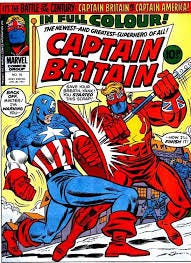
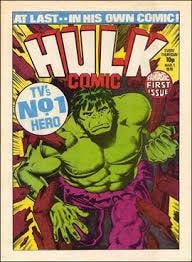
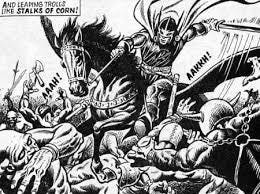
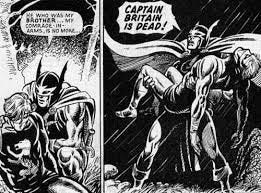
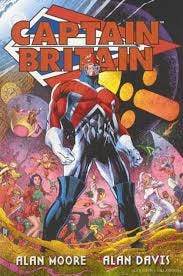
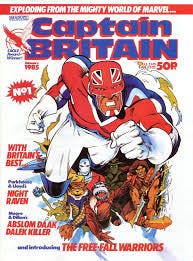
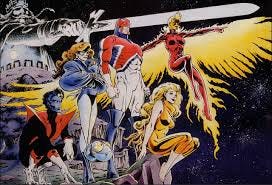
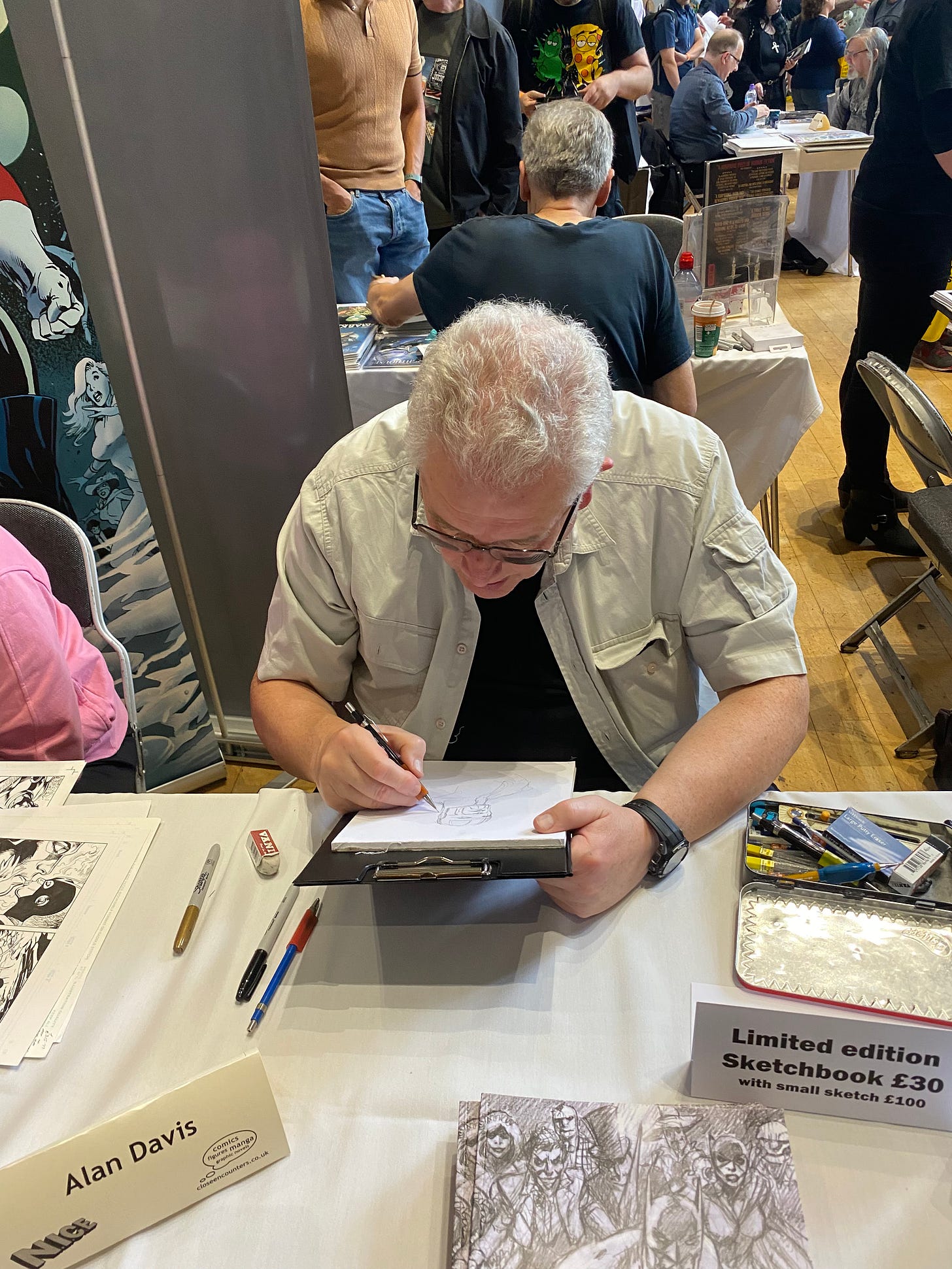
Amazing American haircut on that first cover, David? Some weird artistic prescience perhaps? And StarshipX itself has launched x10, while the company with other rockets will have launched 170 orbital payloads by year end, apparently. Funny stuff.
Awesome, I used to love the Excalibur series